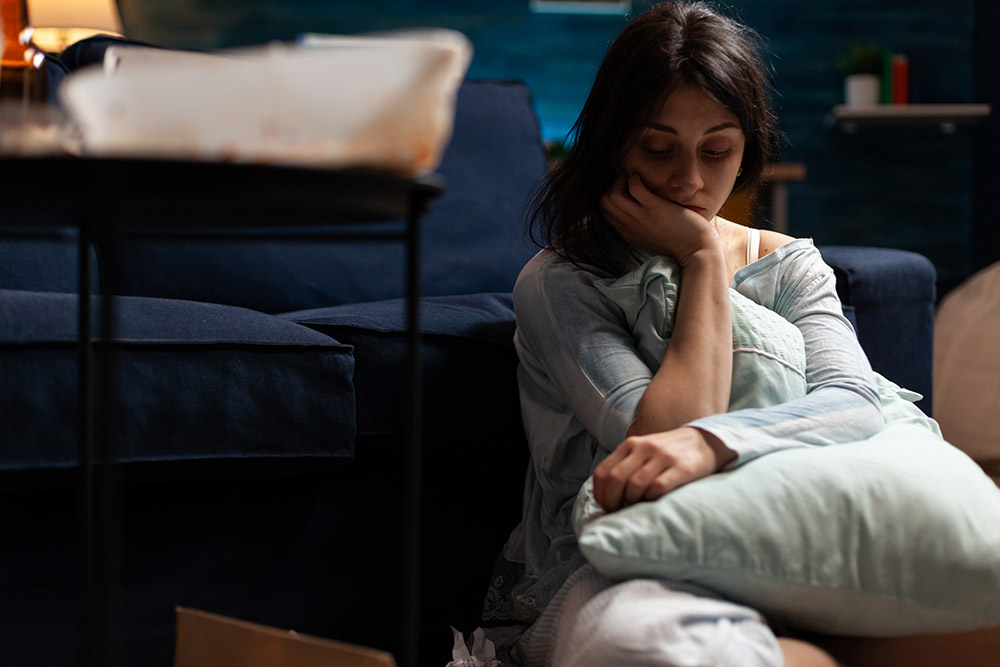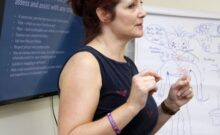According to the Office for National Statistics – in 2021 the suicide rate for females was highest in those aged 45 to 49 years.
And it’s no coincidence that there’s something else going on with many women at this stage of their lives.
A topic that is still so misunderstood – perimenopause. Of which I have my own experience…
My story starts over 35 years ago.
In my late teens and early twenties, I struggled with crippling anxiety – not that I knew what it was back then.
I just thought I had lots of stomach problems, and convinced myself I had a fatal bowel disease. In the end I was diagnosed with generalised anxiety disorder and panic attacks.
I had several periods of mixed anxiety and depression over the years, with a period of agoraphobia in my late twenties when I had 3 children under 5 (enough to send anyone mad!).
So, what does this have to do with perimenopause?
13 years ago, I was working for a major youth charity as a Learning & Development Manager, training youth workers to deliver young people’s personal & social development programmes.
Even back then we recognised that most of the young people with whom we worked were experiencing their own mental health challenges, and our staff didn’t feel equipped to deal with what they were seeing on a day-to-day basis.
So, I completed a Mental Health First Aid instructor training course to give our staff some skills to support the young people.
It was hugely successful and soon made a mandatory part of training for those working directly with young people. I travelled all over the country, staying away from home regularly to deliver training.
It was at this time (not that I knew it then) that I was starting to navigate my own personal journey with perimenopause. Alongside some quite distressing physical symptoms, I was experiencing a rise in the anxiety and panic attacks that I’d experienced at a younger age.
My mood fluctuations left me feeling depressed, unmotivated and emotional. And my confidence tanked. I started to question my own abilities and my mental health deteriorated to such a degree that at the start of January 2015 I was signed off work.
I went to my GP hoping to get some help. Because of my history with anxiety and depression they didn’t look beyond this as an explanation for my symptoms… I was prescribed anti-depressants and sent on my way.
But, after 30 years of managing my mental health, I knew this was different.
And things continued to get worse…
Over the next few weeks and months, I was so anxious I needed sleeping tablets to help me sleep.
I woke in the mornings with severe panic attacks, and anxiety that lasted all day.
I ended up just trying to survive the day until I could knock myself out again at night with the tablets.
One Sunday evening, in absolute desperation, I ended up in A&E scared that I would take my own life.
People had told me that perimenopause could last for 10 years. I remember thinking if that’s the case I don’t think I can survive. I’d rather be dead.
The woman that saved my life…
Fortunately, whilst on sick leave I had access to some counselling through our company’s EAP (Employee Assistance Programme). And my counsellor was a lady of a similar age who’d had her own challenges at work with perimenopausal symptoms. She signposted me to a consultant in women’s health. I was desperate by that point to get some relief, so started to look at ways to access support privately, away from the long NHS waiting lists.
It’s not an over-exaggeration to say that Dr Caroline Marfleet saved my life.
I wasn’t going mad; it was an imbalance of my hormones that was creating havoc with my physical and mental health. She started me on a course of HRT, and within 3 months I had my life back… the old Anita had resurfaced.
But sadly, as in so many stories of so many women, this wasn’t the only menopause problem I needed to fix…
On my return to work I underwent an occupational health assessment, to ensure I was well enough to return to my usual duties. In the assessment it stated that it was highly likely I’d have further periods of sick leave going forward, due to my “condition.”
I challenged this statement. I’d not had a single day off sick in my 7 years with the organisation, my illness was due to an imbalance in my hormone levels which were now back to normal, so I considered I posed no greater risk of sickness absence than my colleagues. My challenge was dismissed and the statement remained on my record.
Time for change
I went back to work on a phased return.
While I was working my way back to full time, I was tasked with writing a mental health strategy for the organisation and it was adopted by the senior leadership team. I was thrilled.
Part of the strategy recommended that a new role be created – someone to head up and drive the strategy across the business. “I know someone who would be ideal” I thought and put myself forward. Only to be dismissed.
A new role as Head of L&D opened within my department. And as the most senior L&D manager at the time, I was well-qualified for the role.
But the position went to someone outside of the organisation.
I felt under-valued, and not trusted to take on any responsibility.
It soon became clear there was no longer a place for me in this organisation.
It was time to start my own business. And Blossom Mental Health Training was born.
Don’t write us off…
Perimenopause and menopause are a part of life. Affecting not only the woman herself but all those around her – partners, children, friends and colleagues.
But by building a better understanding of menopause, you can instead support women to be the best version of themselves during a phase of life that can be the most inspiring and productive of them all!










